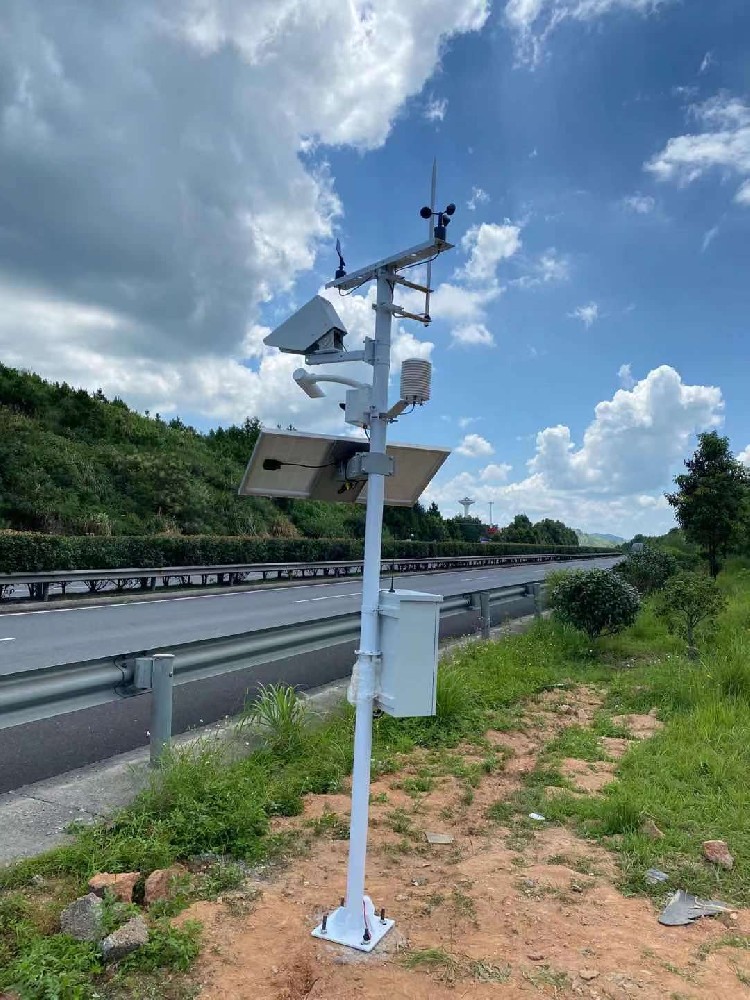

— Blogs —
—Products—
 Consumer hotline +8618073152920
Consumer hotline +8618073152920 WhatsApp:+8615367865107
Address:Room 102, District D, Houhu Industrial Park, Yuelu District, Changsha City, Hunan Province, China
Product knowledge
Time:2024-06-22 17:21:53 Popularity:1039
Traffic visibility monitoring weather station is a kind of weather monitoring system specially designed for the transportation industry, it is a kind of equipment installed in key locations of traffic roads such as highways, bridges and tunnels, etc. It is able to monitor and feedback the traffic visibility and related meteorological parameters in real time, which can help the traffic management department and drivers to understand the road conditions and ensure the safety of traffic. The following is a detailed answer about the traffic visibility monitoring weather station:
First, the traffic visibility monitoring weather station contains sensors
The traffic visibility monitoring weather station is equipped with a variety of sensors, mainly including:
1. Visibility sensor: used to measure atmospheric visibility, that is, meteorological optical distance. Atmospheric visibility is calculated by measuring the total number of discrete light particles (e.g., smoke, dust, haze, fog, rainfall, and snowfall) in the air passing through the sampling chamber.
2. Temperature sensor: Used to monitor air temperature, which affects fog formation and visibility.
3. Humidity sensor: used to monitor the moisture content of the air, as high humidity tends to form haze and affect visibility.
4. Wind speed and direction sensors: used to measure wind speed and direction to help understand the impact of wind on traffic and visibility.
5. Other meteorological sensors: according to specific needs, may also include precipitation sensors, barometric pressure and other sensors, in order to obtain more comprehensive meteorological information.
6. Atmospheric transmittance sensors: Used to measure the ability of the atmosphere to transmit light and thus indirectly assess visibility.

Second, the role and value of traffic visibility monitoring weather station
1. Accurate monitoring and real-time feedback: using advanced sensor technology and data analysis algorithms, it can accurately monitor the visibility situation on the road in real time. Whether it is dense fog, heavy rain, snow or dust storms, these weather stations can provide accurate data to help the traffic management department to make timely response.
2. Early warning alerts and early response: When visibility falls below safety standards, the system automatically triggers an alert and sends timely warnings to drivers and relevant authorities through roadside displays, SMS, and app push. This timely feedback mechanism provides drivers with valuable time to make safety decisions, significantly reducing traffic accidents caused by low visibility.
3. Traffic management and flow control: Provide instant and reliable data for traffic management departments to adjust traffic management and flow control strategies according to real-time visibility levels, ensuring reasonable distribution of traffic flow and avoiding traffic congestion and accidents.
4. Traffic guidance and navigation safety: The data can also be used in in-car navigation systems or traffic applications to provide real-time visibility information and suggested driving routes to help drivers avoid areas of low visibility and reduce the risk of accidents.
5. Improve efficiency: Real-time data can be used to improve transportation efficiency and reduce traffic congestion caused by visibility problems.
6. Scientific research: Provide data support for research in meteorology and transportation engineering.
Application Scenarios of Traffic Visibility Monitoring Weather Station
1. Highway: installing traffic visibility monitoring weather station in important sections of highways to monitor visibility in real time and ensure the safety of highways.
2. Urban traffic: installing visibility monitoring equipment at major intersections and bridges in cities to help traffic management departments regulate traffic flow and avoid traffic accidents caused by low visibility.
3. airport operation: in the vicinity of airports, monitoring weather stations to provide accurate visibility information to ensure the safety of aircraft landing and taking off.
4. Natural disaster response: In areas where natural disasters occur frequently, visibility monitoring weather stations are used to warn of upcoming weather changes, facilitating the timely evacuation of people and the adoption of precautionary measures.
Transportation visibility monitoring weather station is widely used in highways, railroads, airports and other transportation places of meteorological monitoring. Especially in highways, bridges, tunnels and other areas prone to low visibility conditions, its role is more significant. In addition, in mountainous areas, coastal areas and other complex meteorological conditions, traffic visibility monitoring weather stations also play an important role in providing strong protection for traffic safety.
In summary, traffic visibility monitoring weather stations play a vital role in ensuring road traffic safety and are an indispensable part of modern traffic management.
Related recommendations
Sensors & Weather Stations Catalog
Agriculture Sensors and Weather Stations Catalog-NiuBoL.pdf
Weather Stations Catalog-NiuBoL.pdf
Related products
 Combined air temperature and relative humidity sensor
Combined air temperature and relative humidity sensor Soil Moisture Temperature sensor for irrigation
Soil Moisture Temperature sensor for irrigation Soil pH sensor RS485 soil Testing instrument soil ph meter for agriculture
Soil pH sensor RS485 soil Testing instrument soil ph meter for agriculture Wind Speed sensor Output Modbus/RS485/Analog/0-5V/4-20mA
Wind Speed sensor Output Modbus/RS485/Analog/0-5V/4-20mA Tipping bucket rain gauge for weather monitoring auto rainfall sensor RS485/Outdoor/stainless steel
Tipping bucket rain gauge for weather monitoring auto rainfall sensor RS485/Outdoor/stainless steel Pyranometer Solar Radiation Sensor 4-20mA/RS485
Pyranometer Solar Radiation Sensor 4-20mA/RS485
Screenshot, WhatsApp to identify the QR code
WhatsApp number:+8615367865107
(Click on WhatsApp to copy and add friends)
